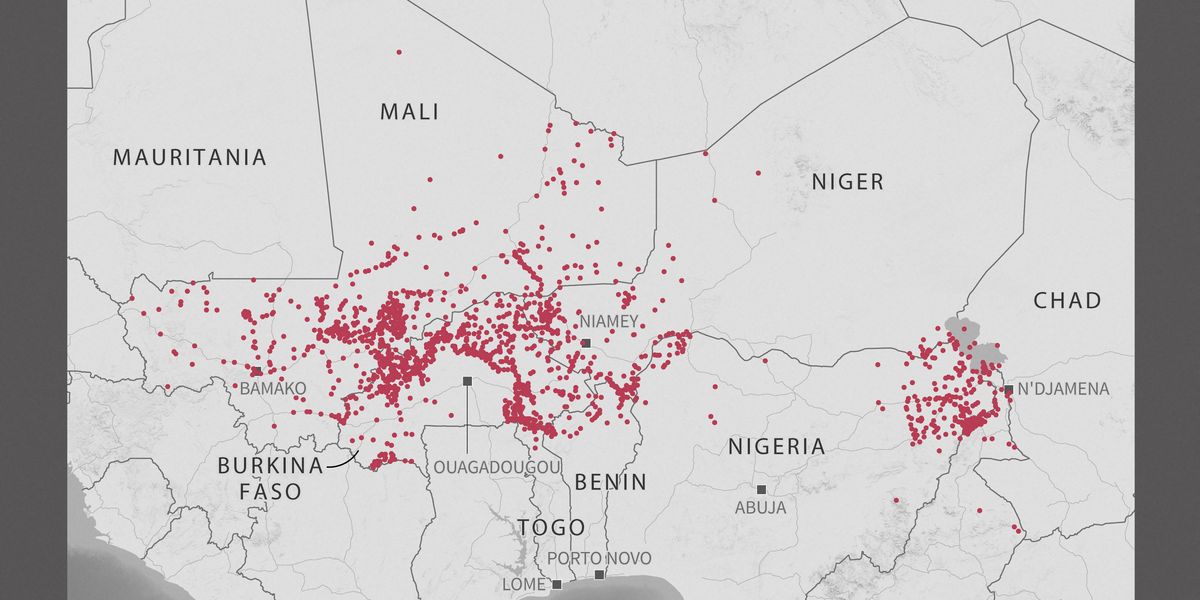
The pilot was heard exclaiming two chilling words right before the crash (Image: Getty Images)
When Colgan Air Flight 3407 took off from Newark, New Jersey for Buffalo, New York, the 49 people on board had no idea they would soon be meeting a horrific, devastating end.
On February 12, 2009, the Colgan Air plane entered an aerodynamic stall and crashed into a house — killing all 49 souls on board, as well as one person on the ground.
In a cockpit voice recorder transcript released by the National Transportation Safety Board, Captain Marvin Renslow chilling last words can be heard, followed by a scream moments later from his co-pilot, First Officer Rebecca Shaw — all recorded mere seconds before the fatal crash.
In the moments leading up to the tragic crash, as they approached the Buffalo Niagara International Airport, Renslow and Shaw can be heard chatting about the First Officer’s career and discussing their fears of flying in icy weather conditions.
Shortly after, the twin-engine turboprop Dash 8-Q400 Bombardier experienced an aerodynamic stall and plunged into a house. The accident led to devastating destruction and loss of life.

Workers and investigators examine the debris from the site of the plane crash (Image: Getty Images)
In the cockpit transcript released by the Safety Board, Renslow and Shaw can first be heard speaking to each other about the amount of ice that has formed on their wings. The conversation took place less than seven minutes before the crash — as their plane was descending from 6,000 to 4,000 feet as it approached Buffalo on a wintry night
Shaw said, “it's lots of ice,” to which Renslow replied, “Oh yeah that's the most I've seen, most ice I've seen on the leading edges in a long time, in a while anyway I should say.”
Renslow then remarked he’d flown approximately 625 hours in the region before he was hired by Colgan Air.
Shaw responded: “I really wouldn't mind going through a winter in the Northeast before I have to upgrade to captain. I've never seen icing conditions. I've never de-iced. I've never seen any. I've never experienced any of that. I don't want to have to experience that and make those kinds of calls. You know I would’ve freaked out. I would’ve like seen this much ice and thought, ‘Oh my gosh, we were going to crash.’”
Renslow then replied to Shaw’s apprehensions: “I would've been fine. I would have survived it. There wasn't, we never had to make decisions that I wouldn't have been able to make but.. now I'm more comfortable.”
As the crew lowers the landing gear and adjusts the flaps, a sound resembling the movement of the flap handle is recorded at exactly 10:16.26 pm and Shaw can be heard saying, “Uhhh.”
Less than a second later, the cockpit picks up noises consistent with the stick shaker — a warning transmitted through the control stick that the aircraft is approaching an aerodynamic stall.
This warning persists for 6.7 seconds. Shortly after, a distinct horn begins sounding, indicating the autopilot has been disengaged. That tone continues uninterrupted for the remainder of the cockpit recording. Roughly three seconds after the stick shaker activates, a click is heard, followed by the audible increase in engine thrust.
At 10:16.34.8 pm, Renslow can be heard exclaiming, “Jesus Christ.”
After that, Shaw relays she has put the flaps up and asks if she should put the landing gear up as well, to which Renslow responds: “Gear up, oh (expletive).” As sounds and noise in the cockpit increases, Renslow says: “We're down.” A thump follows, and Shaw says “we” — followed by a chilling scream. With that, the transcript ends at 10:16.52 pm.
Documents released by the Safety Board also revealed that safety investigators were told by a training instructor that Renslow “was slow learning” the Dash 8 at the beginning, however his abilities had reportedly “picked up at the end”.
The training instructor further shared that Renslow had struggled to acquaint himself with that particular aircraft model’s flight management system and also demonstrated difficulties in learning how to switch positions which were opposite from the throws he had previously been used to on another aircraft. This instructor did, however, describe the captain’s decision-making skills as very good.
Cogan Air was also forced to acknowledge that Renslow's training of the craft did not include a simulation or demonstration of the plane’s stick-pusher system.
A stick-pusher automatically activates when an aircraft nears a stall, forcing the plane’s nose down into a dive so it can pick up enough speed to allow the pilot to guide it to a safe recovery.

The crash killed all 49 souls on board and 1 person on-ground (Image: Getty Images)
During Flight 3407’s approach to Buffalo Niagara International Airport, however, Renslow went against proper procedure and pulled back on the control column when the stick-pusher engaged, reportedly trying to raise the nose and stop the dive. The correct procedure is to push forward to gain speed.
The National Transportation Safety Board determined that pilot error and insufficient training were to blame for the tragic crash. The pilots were deemed to have reacted "inappropriately" to stall warnings, which resulted in turbulent airflow over the wing and a rapid loss of altitude.
Consequently, the pilot lost control and the aircraft plummeted into a house just five miles from the runway's end.
The tragedy led to bereaved families of the victims taking decisive action, resulting in the implementation of new safety regulations within the commercial aviation sector. The 2010 legislation introduced stricter crew rest requirements, duty time limitations, and mandated airlines to reveal the operator of each flight.
Furthermore, a database was established to ensure that pilots accumulate over 1,500 flying hours before being qualified to pilot an aircraft.
Invalid email
We use your sign-up to provide content in ways you've consented to and to improve our understanding of you. This may include adverts from us and 3rd parties based on our understanding. You can unsubscribe at any time. Read our Privacy Policy

 11 hours ago
2
11 hours ago
2










 English (US) ·
English (US) ·